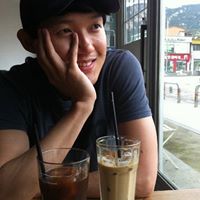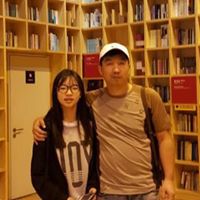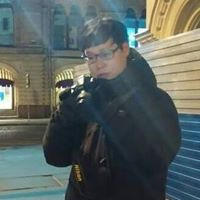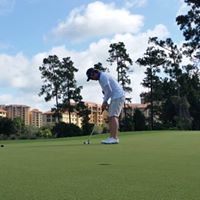Seho Oh
Deceased
from Edmonds, WA
- Also known as:
-
- Se Ho Oh
- Se-Ho Oh
- Seoh Oh
- Oh Seho
- Oh Se-Ho
- Phone and address:
- 16413 51St Ave W, Edmonds, WA 98026
Seho Oh Phones & Addresses
- 16413 51St Ave W, Edmonds, WA 98026
- 5229 107Th St, Mukilteo, WA 98275 • 4257427304
- 5025 145Th Ave, Bellevue, WA 98006 • 4256448271
- Kiona, WA
- Seattle, WA
- 5025 145Th Pl SE, Bellevue, WA 98006
Work
-
Position:Executive, Administrative, and Managerial Occupations
Education
-
Degree:High school graduate or higher
Resumes

Seho Oh
view sourceUs Patents
-
High Speed Image Processing Apparatus Using A Cascade Of Elongated Filters Programmed In A Computer
view source -
US Patent:6404934, Jun 11, 2002
-
Filed:Oct 20, 2000
-
Appl. No.:09/692948
-
Inventors:Seho Oh - Mukilteo WA
-
Assignee:Shih-Jong J. Lee - Bellevue WA
-
International Classification:G06T 520
-
US Classification:382260, 382302, 382308
-
Abstract:A high speed image processing apparatus is created through the use of cascaded elongated filters. The processing speed of the filters is kernel size insensitive, enabling use of general purpose computing facilities to process high resolution, monochrome, and multi-spectrum images. Elongated filters described include both linear and non-linear filters. Very large kernel and multi-dimensional image processing is accomplished with reduced complexity and portable programming instructions.
-
Structure-Guided Image Measurement Method
view source -
US Patent:6456741, Sep 24, 2002
-
Filed:Dec 15, 2000
-
Appl. No.:09/739084
-
Inventors:Seho Oh - Mukilteo WA 98275
-
International Classification:G06K 946
-
US Classification:382190, 382220
-
Abstract:Structure-guided image estimation and measurement methods are described for computer vision applications. Results of the structure-guided estimation are symbolic representations of geometry entities such as lines, points, arcs and circles. The symbolic representation facilitates sub-pixel measurements by increasing the number of pixels used in the matching of image features to structural entities, improving the detection of structural entities within the image, weighting the contribution of each image sample to the measurement that is being made and optimizing that contribution. After the structure-guided estimation, geometric entities are represented by their symbolic representations. Structure-guided measurements can be conducted using the symbolic representation of the geometric entities. Measurements performed from the symbolic representation are not limited by image resolution or pixel quantization error and therefore can yield sub-pixel accuracy and repeatability.
-
Structure-Guided Automatic Learning For Image Feature Enhancement
view source -
US Patent:6507675, Jan 14, 2003
-
Filed:Mar 23, 2001
-
Appl. No.:09/815466
-
Inventors:Seho Oh - Mukilteo WA
Chi-Chou Huang - Redmond WA -
Assignee:Shih-Jong J. Lee - Bellevue WA
-
International Classification:G06K 940
-
US Classification:382266, 382155
-
Abstract:A structure-guided automatic learning system for image feature enhancement uses a learning image together with an application domain structure and detection target specification to produce a feature enhancement image processing recipe. An enhancement goodness measure is used to select between alternatives in the learning process. The feature enhancement recipe is used in an application module to process input images and produce a feature enhanced image output. Calipers are used for application domain structure and detection target specification. To unify the processing steps for all caliper specifications, a non-directional box caliper defined region such as a circle caliper or an arc caliper or other connected structures can be converted into a directional box caliper defined region so that a directional box caliper based feature enhancement method can be applied. The process can be inverted to convert a converted directional box caliper region back to the original format.
-
Automatic Template Generation And Searching Method
view source -
US Patent:6603882, Aug 5, 2003
-
Filed:Apr 12, 2001
-
Appl. No.:09/834817
-
Inventors:Seho Oh - Mukilteo WA 98275
-
International Classification:G06K 968
-
US Classification:382217, 382240
-
Abstract:A fast multi-resolution template search method uses a manually selected or an automatically selected template set, learned application specific variability, and optimized image pre-processing to provide robust, accurate and fast alignment without fiducial marking. Template search is directed from low resolution and large area into high resolution and smaller area with each level of the multi-resolution image representation having its own automatically selected template location and pre-processing method. Measures of discrimination power for template selection and image pre-processing selection increase signal to noise and consistency during template search. Signal enhancement means for directing discrimination of optimum template location are taught.
-
Rotation And Scale Invariant Pattern Matching Method
view source -
US Patent:6640008, Oct 28, 2003
-
Filed:Jun 29, 2001
-
Appl. No.:09/895150
-
Inventors:Seho Oh - Mukilteo WA 98275
Ryan K Seghers - Kirkland WA 98034 -
International Classification:G06K 968
-
US Classification:382218, 382170, 382278, 382296, 382298
-
Abstract:A polar coordinate representation of a template image is projected onto the radius axis and rotation axis. Linear transformation of the radius projection provides multiple templates for rapid one dimensional scale search. Pattern matching of the angular projection onto the rotation axis facilitates rapid one dimensional pattern match for rotation variation. The invention overcomes the speed limitation of the normalized correlation template matching method when the pattern being searched is subject to rotation or size variation. A fast correlation method uses a weighted histogram sum to compute the correlation score.
-
Automatic Referencing For Computer Vision Applications
view source -
US Patent:6678404, Jan 13, 2004
-
Filed:Oct 31, 2000
-
Appl. No.:09/703018
-
Inventors:Seho Oh - Mukilteo WA 98275
-
International Classification:G06K 900
-
US Classification:382155, 382143, 382145
-
Abstract:A method for creating and using reference images in a defect detection or location system which receives a plurality of learning images containing objects of interest and creates at least one reference image output. Using the reference image, the computer vision system detects discrepancies between objects of interest in an input image and the expected object from the reference images. The defect detection system generates a discrepancy image output. The computer vision system further determines the existence of the object of interest in an input image and provides the object of interest location if detected.
-
Structure-Guided Automatic Alignment For Image Processing
view source -
US Patent:6829382, Dec 7, 2004
-
Filed:Jun 13, 2001
-
Appl. No.:09/882734
-
Inventors:Seho Oh - Mukilteo WA 98275
-
International Classification:G06K 900
-
US Classification:382151, 382152, 382190, 382199, 382201
-
Abstract:When application domain structure information is erroneously encoded into parameters for image processing and measurements the accuracy of the result can degrade. A structure-guided automatic alignment system for image processing receives an image input and application domain structure input and automatically creates an estimated structure output having improved alignment. Measurement and image processing robustness are improved.
-
Automatic Detection Of Alignment Or Registration Marks
view source -
US Patent:6842538, Jan 11, 2005
-
Filed:Mar 23, 2001
-
Appl. No.:09/815816
-
Inventors:Seho Oh - Mukilteo WA, US
Larry A. Nelson - Seattle WA, US -
International Classification:G06K 900
G06K 962
G06K 936
H04N 100 -
US Classification:382224, 382145, 382291, 358406
-
Abstract:Mark detection and position determination are improved by use of directional elongated filters, symmetry, gray scale image processing, structural constraints, and learning. Directional elongated filters are used to pre-process images of registration marks to create masks and enhanced images. Working sequentially, portions of the mark are detected and classified. The input gray scale image of the mark is processed using its structural constraints in conjunction with a mask for the detected mark. A cost function estimation determines mark position and orientation with sub-pixel accuracy. Learning is used to improve specific application performance.

Seho Oh
view source
Seho Oh
view source
Seho Oh
view source
Seho Oh
view source
Seho Oh ()
view source
Seho Oh
view source
Seho OH
view source
Seho OH
view sourceYoutube
Myspace
Classmates

Seho Oh
view sourceSchools:
-maine east township h.s Park Ridge IL 1998-2002
Community:
Jeff Sonntag, Garshia Wright, Mahesh Batia, David Binh, Omar Alayli, Monika Kukus, Jehnyah Leach, Anthony Carbonatto, Jon Scott, Vincent Pasetes, Jonathan Szalai

seho Oh, Maine East High ...
view source
Maine East High School, P...
view sourceGraduates:
seho Oh (2000-2004),
Mary Ruchniewicz (1975-1979),
Ela Sajdak (1992-1996),
barbara mryczko (1997-2001)
Mary Ruchniewicz (1975-1979),
Ela Sajdak (1992-1996),
barbara mryczko (1997-2001)
Googleplus

Seho Oh

Seho Oh
Get Report for Seho Oh from Edmonds, WADeceased


